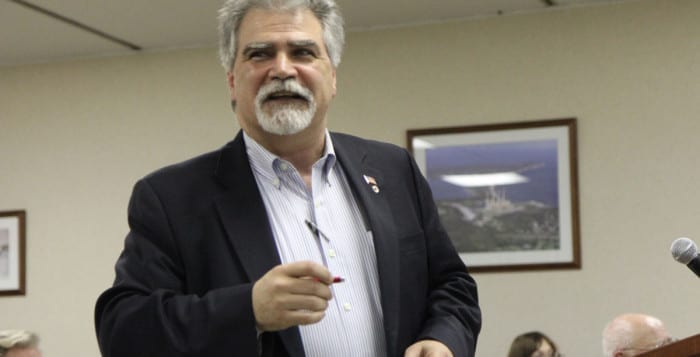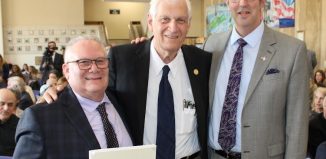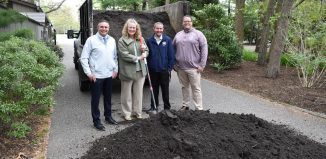Beach debate continues as coastal geologist visits
The considerations for the Asharoken beach and dune restorations continue.
Coastal geologist Aram Terchunian from First Coastal Corp. consultants delivered a presentation to the board of trustees on Feb. 3, and trustees said they still agreed to go forward with an $84.5 million plan that would transform Asharoken’s beaches and dunes.
Several months ago, the U.S. Army Corps of Engineers presented the board with five different alternatives to combat the flooding and erosion problems the village has encountered, specifically those that arose after Hurricane Sandy.
Trustees said they preferred the plan known as alternative (1), which uses sand to fill the coastline along Asharoken Beach. The plan includes filling the beach with a particular type of offshore grain that is compatible with the native beach sand. There will also be a dune made on the west end of the beach.
The initial volume of beach fill is 600,000 cubic yards with 80,000 cubic yards of nourishment every three years, Terchunian said. The total estimated cost for construction alone of this plan is just more than $21 million, Terchunian said.
He said that the construction cost is shared roughly 70 percent by the federal government, 20 percent by the state and 10 percent by local government. But the maintenance-costs share changes to only 50 percent federal, 35 percent state and 15 percent local.
The coastal geologist also said the sand alternative plan is the least expensive to construct, but the most expensive to maintain over time due to the amount of annual sand needed.
He said the Army Corps “did their homework” with the proposals they presented to the board, and he particularly praised the plan for alternative (1) because of the type of offshore sand the Corps planned to use.

“Looking at these sediments, the Corps made an astute observation,” Terchunian said. “Designing the project with a slightly heavier grain size than exists on beach, from offshore, is an excellent match [to the sand type currently on the beach].”
He said the grain size is “critically important” to the success and endurance of this plan.
In a phone interview on Friday, Asharoken Mayor Greg Letica said the board has concerns with the groin components in the other alternatives presented by the Army Corps.
“We are also concerned about the fact that there is not guaranteed long-term replenishment money which could leave the groins exposed, become a possible eyesore and cause more erosion downstream,” he said.
The main concern of residents and the trustees alike throughout this entire process has been the issue of public access. It is required by the federal government for public access points to be made if government funds are used to help finance the project. Currently, the public is only afforded access of a private beach property below the waterline.
However, if this proposal goes through, the public would have access above the mean high waterline to private properties on the Long Island Sound side.
Letica asked Terchunian if there is anyway Asharoken could get around the additional required public access points. Terchunian said that the Army Corps is not allowed to have any flexibility with the projects they propose, and the U.S. Congress said, “If they spend the money in this location, these are the requirements.”
Local politicians such as Suffolk County Legislator William “Doc” Spencer (D-Centerport) and Huntington Town Supervisor Frank Petrone (D) have written to the Army Corps headquarters asking for the public access points on private property to be reconsidered.
Terchunian has years of experience working with the Army Corps, most notably with the Village of Westhampton Beach for dune restoration.
The need for this project was first introduced by Letica in 2012, in a letter to federal legislators urging them to find funding to protect Asharoken Avenue, which he had called “exposed,” after Sandy and multiple nor’easters continued to reduce the size of the dunes protecting the shore.
The village had until yesterday, Feb. 10, to respond initially to the Army Corps. Letica said the board intends to keep the community completely in the loop as it comes closer to making a decision on whether or not they go forward with a plan.
“We want the board to not make these decisions unilaterally,” he said, adding that the trustees will look into forums like public hearings or public surveys to gauge residents’ desires.







